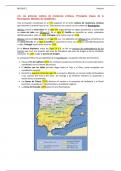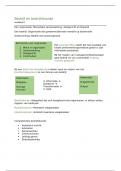Samenvatting
Economics 2 Summary (Mankiw)
- Vak
- Instelling
- Boek
This is a summary of Economics by Mankiw & Taylor. The summary contains diagrams, as well as the most important terms and explanations in italics and bold for a clearer view. The summary contains only the chapters of the exam requirement. Enjoy reading, learning and good luck with your exam!
[Meer zien]










